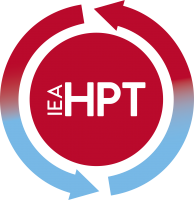Source: International Energy Agency (IEA), Swiss Federal Office of Energy (SFOE)
Partner: Information Centre on Heat Pumps and Refrigeration (IZW) e.V., Austrian Institute of Technology (AIT), Danish Technological Institute (DTI), Japan Electro-Heat Center, Ulster University, EPI Department EDF (France)
Duration: 2017 – 2019 (36 months)
External website: https://heatpumpingtechnologies.org/annex48/
Abstract:
Heat pumps have become increasingly important in the world as a technology to improve energy efficiency and reduce CO2 emissions as well as energy costs. Industrial heat pumps (IHP) are active heat-recovery devices that increase the temperature of waste heat in an industrial process to a higher temperature to be used in the same process or another adjacent process or heat demand.
While the residential market may be satisfied with standardized products and installations, most industrial heat pump applications need to be adapted to unique conditions. In addition, a high level of expertise is crucial.
The main goal of the new Annex is defined, to overcome still existing difficulties and barriers for the larger scale market introduction of industrial heat pumps. The results should be concentrated on the development and distribution of condensed and clear information material for policy makers, associations and industries. Annex 48 is based on a previous Annex 35. Four tasks are defined:
- Task 1: Analysis of the collected Case studies and successful applications of industrial heat pumps,
- Task 2: Structuring information on industrial heat pumps and preparation of guidelines
- Task 3: Application of existing models for the integration of a heat pump into a process.
- Task 4: Communication of the IHP potential for policy makers, designers and decision makers
Involvement of IPESE group: Task 3 – Application of existing models. The goals of Task 3 were derived from the conclusions drawn in the preceding IEA Heat Pump Annex 35 [1] Task 2 report: Wide-scale employment is inhibited by the complexity and specific training required for the use of most available tools as well as the theoretical principles behind them. It was therefore concluded to focus on: Providing hands-on indications for the application of existing models to a real case study, and a comparison of tools to be used. And further, deriving an easy-to-use set of guidelines for systematic industrial heat pump integration directed at practitioners without the need for tools and optimization algorithms.

Contact persons: Anna Sophia Wallerand (anna.wallerand@epfl.ch), Ivan Kantor (ivan.kantor@epfl.ch)
Publication list:
Please note that the publication lists from Infoscience integrated into the EPFL website, lab or people pages are frozen following the launch of the new version of platform. The owners of these pages are invited to recreate their publication list from Infoscience. For any assistance, please consult the Infoscience help or contact support.